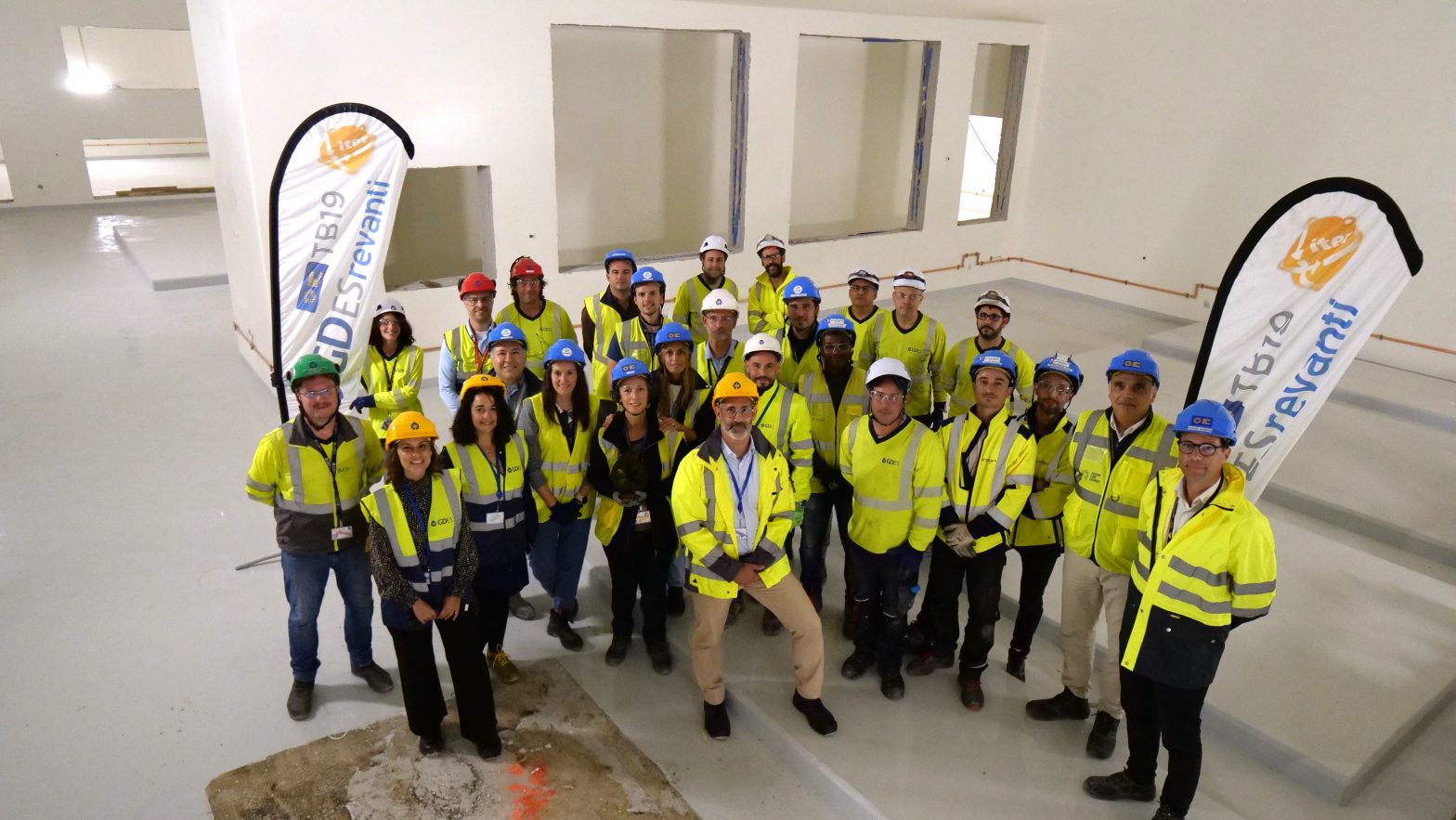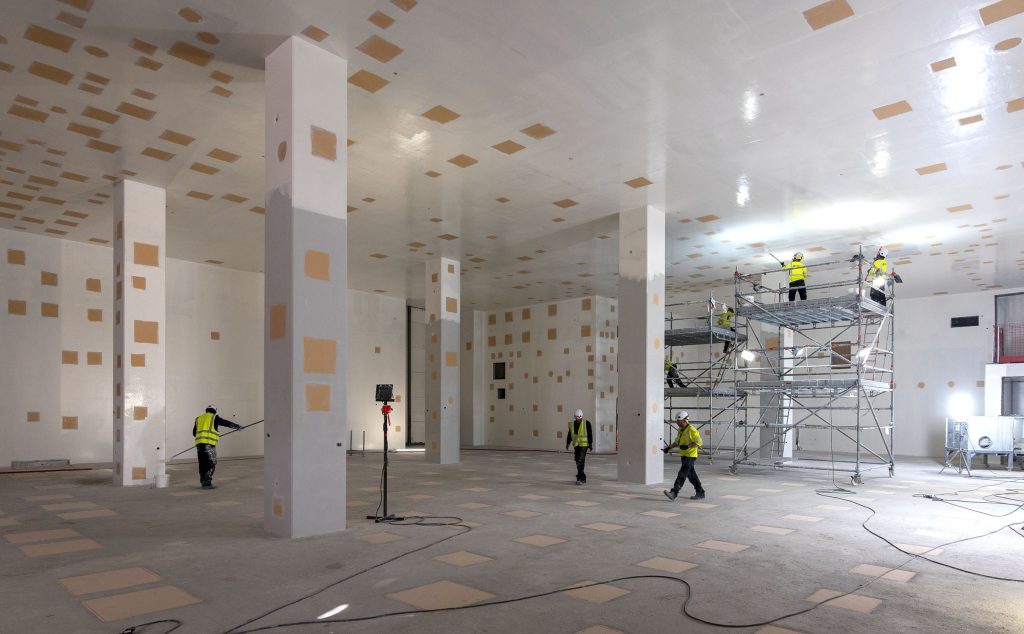ITER Tokamak Complex fully painted

Teams from F4E, GDES, ITER Organization, Engage and EnergHIA celebrated the milestone in the freshly painted Tritium Building. ©ITER Organization
The ITER Tokamak Complex will house the world’s largest fusion experiment. A smooth white coating covers the walls of this facility (made of three connected buildings). It is the result of five years of relentless handwork by a team of up to 40 specialists from Spanish company GDES, collaborating with Fusion for Energy (F4E).
Naturally, the teams were eager to celebrate the completion of the contract. As soon as the final brushstrokes in the Tritium building dried, they gathered there to mark the achievement. Theirs was no ordinary project to manage and execute. It took a lot of planning to cover in time the 200,000 m2 of walls whilst meeting the strict nuclear safety requirements and without disturbing other activities on-site. To orchestrate it, the Engage and the EnergHIA consortia provided technical and administrative support, respectively.

The process of painting the Tokamak Complex can be summarised in a few steps. First, technicians had to sandblast the walls to leave a texture without cracks or pores for the paint to adhere properly. They performed this task in a contained environment, to avoid dust harming sensitive equipment. After careful examination and a bit of polishing, painters moved in with their brushes and rolls to apply several protective layers. In fact, even the paint itself needed to meet unique standards. Qualified by EDF, it is resistant to radiation, non-flammable, and easy to decontaminate, to ensure safe working conditions over the lifetime of the facility.
“These operations would have been difficult enough in an empty facility. However, we also had to permanently coordinate with other works in the same buildings”, explained Marian Sánchez, F4E Technical Officer following the contract. For instance, the painters had to adapt their plan to the installation of the heavy port cell doors or the delivery of large components.
The GDES crew did not even stop during the height of the Covid pandemic, being one of the few teams present on-site at the time. Besides the Tokamak Complex, they carried out additional tasks, such as fire protection coating in the Radio Frequency Building.
“Our partners showed a sense of responsibility, always prioritising the project over their interests and delivering with high quality. Thanks to teamwork and flexibility, we all made a very challenging contract look simple,” insisted Sánchez. ‘We are proud of our achievements in ITER, a collaboration that represented a turning point for our Group. It has been more of a partnership than a customer-supplier relationship, with an approach that will inspire other large projects,” said Héctor Dominguis, President and CEO of GDES.
